Key takeaways
- TikTok promotes creativity and concise communication, helping students express complex ideas in engaging formats.
- Activist teacher resources inspire critical thinking and real-world engagement, transforming the classroom dynamic.
- Challenges include distractions, privacy concerns, and accessibility issues that necessitate careful integration strategies.
- Measuring engagement should focus on the quality of interactions rather than just views or likes, highlighting deeper connections with the content.

Understanding TikTok as a Tool
TikTok is more than just a platform for catchy dances; it’s a dynamic tool that thrives on creativity and brevity. When I first explored it for classroom use, I was surprised by how quickly students could condense complex ideas into short, impactful videos. Have you ever noticed how a message can hit harder when it’s wrapped up in just 60 seconds or less?
What makes TikTok especially powerful is its ability to merge visual storytelling with sound, often creating an emotional connection that traditional assignments sometimes lack. I’ve seen students express their perspectives passionately through this format, turning abstract concepts into relatable moments. Isn’t it fascinating how this kind of engagement can deepen understanding in ways a textbook rarely does?
At its core, TikTok taps into our natural love for stories told in a quick, digestible way. From my experience, it invites learners to experiment and take risks with their ideas, fostering a sense of ownership and voice. Could this be why students seem more motivated when projects feel less like homework and more like personal expression?
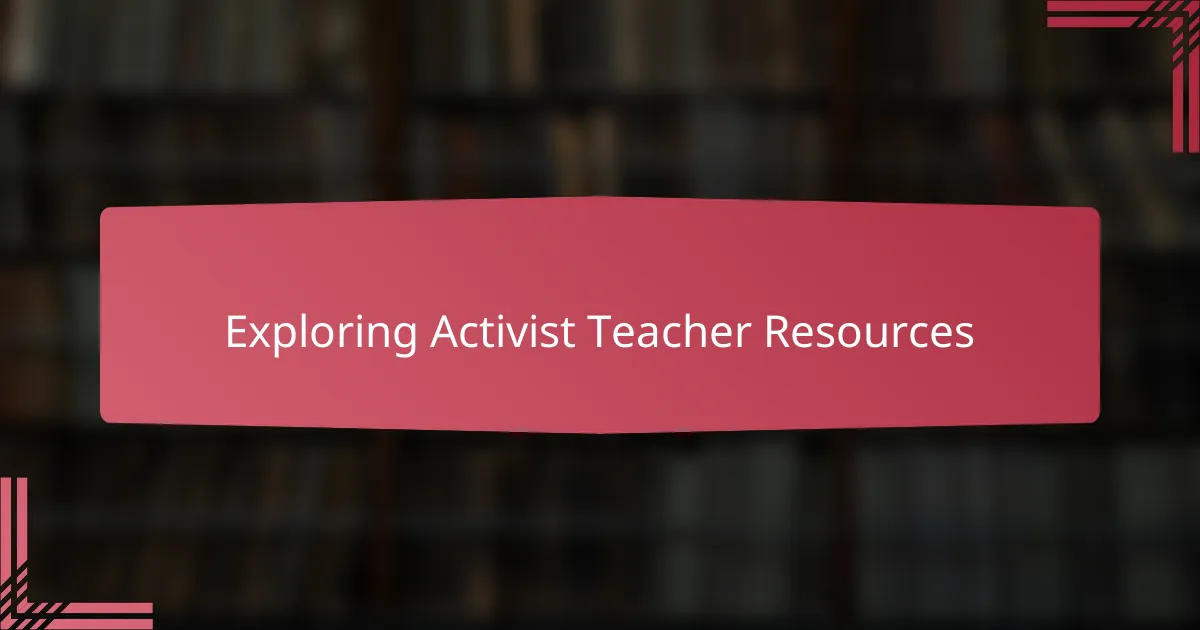
Exploring Activist Teacher Resources
When I first dove into activist teacher resources, I was amazed by the abundance of materials designed to spark critical thinking and social awareness. It felt like discovering a treasure trove where passion meets pedagogy, offering tools that truly resonate with students eager to make a difference. Have you ever found resources that don’t just inform but also inspire action? That’s exactly the kind of impact activist teacher materials have had on my classroom.
One thing I appreciate is how these resources often come from educators and activists who understand the challenges and triumphs firsthand. This personal connection makes the content authentic, which helps students see beyond theory and into real-world change. When I shared a project rooted in these resources, students didn’t just complete an assignment—they felt energized to continue learning and engaging outside school walls.
Exploring these materials also pushed me to rethink my role as a facilitator rather than just a provider of knowledge. It sparked conversations about identity, justice, and community that felt honest and urgent. Isn’t it powerful when teaching becomes a two-way street, where both teacher and student grow through shared exploration? That’s why diving into activist teacher resources has been so transformative for me.
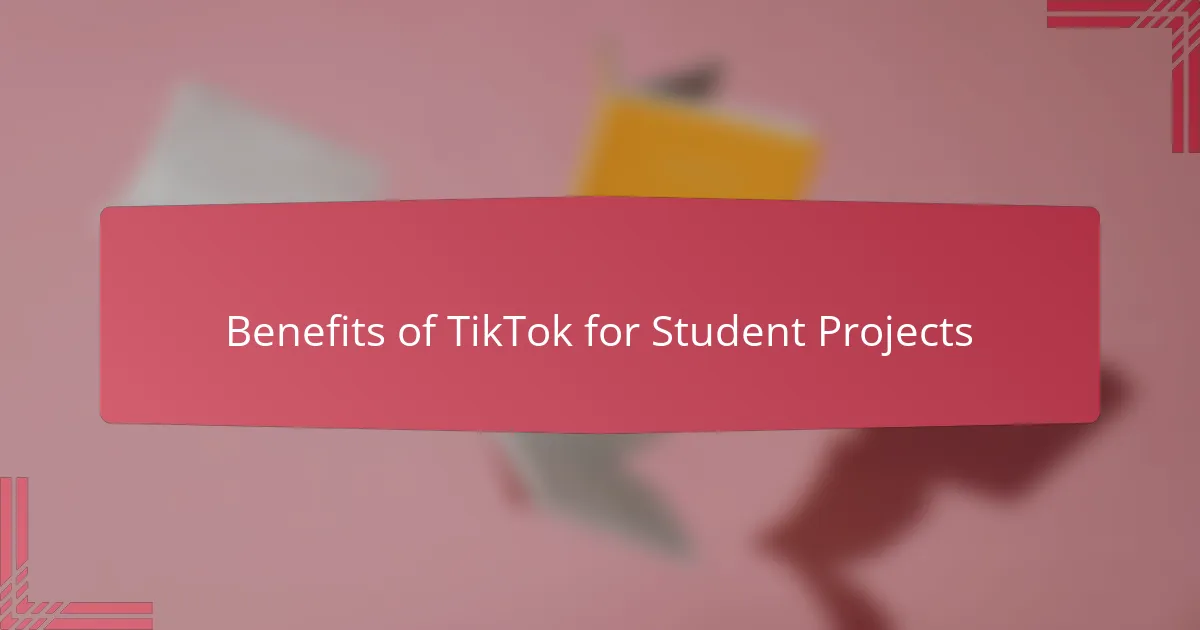
Benefits of TikTok for Student Projects
What really stands out to me about using TikTok for student projects is how it meets young people where they already are. When I assigned a project using TikTok, I noticed students weren’t just completing it—they were excited to share their work with peers beyond the classroom. Isn’t it something when a platform known for entertainment suddenly becomes a space for thoughtful expression?
Another benefit I’ve seen is how TikTok encourages concise, clear communication. Students learn to strip down their ideas to the essentials without losing meaning, which is a skill many struggle with. I’ve watched as shy students find their voice through this format, gaining confidence as they create videos that captivate viewers in under a minute.
Lastly, TikTok’s interactive nature fosters collaboration and creativity in ways traditional projects sometimes can’t. Students remix ideas, respond to trends, and engage in conversations that expand the project’s impact. Doesn’t that kind of dynamic exchange make learning feel alive and relevant? From my experience, this collective energy transforms assignments into shared journeys.
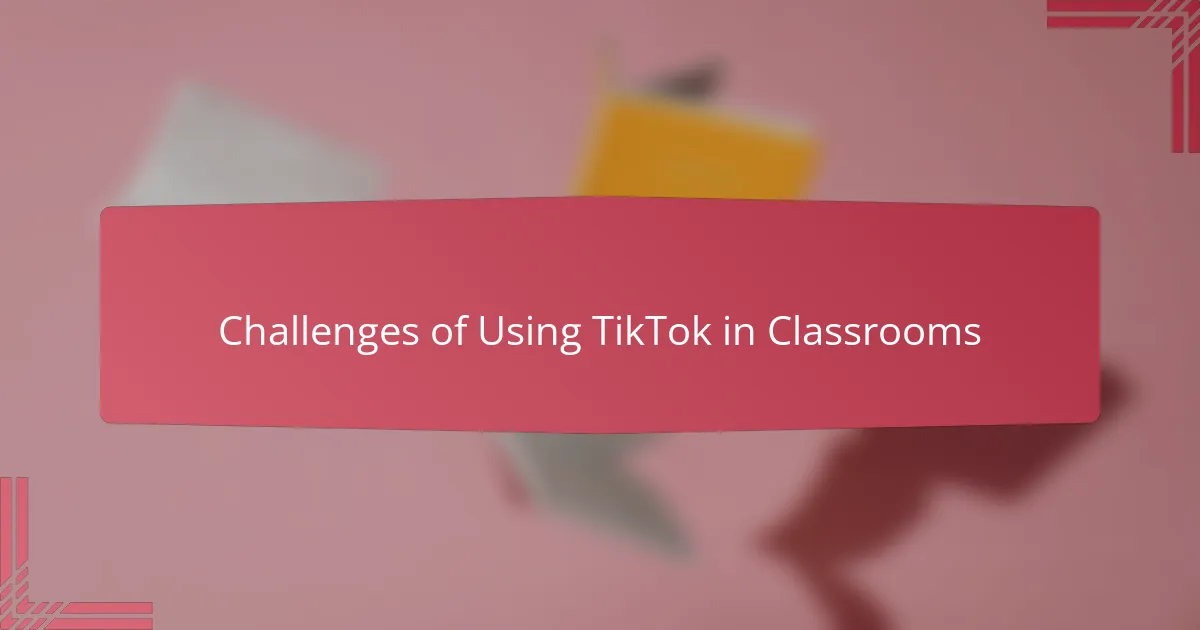
Challenges of Using TikTok in Classrooms
One challenge I’ve encountered with TikTok in the classroom is the distraction factor. It’s hard not to notice how easily students can drift from creating meaningful content to scrolling through endless entertainment. Have you ever tried to keep focus when the platform itself invites distraction at every swipe?
Privacy concerns also weigh heavily on my mind. Knowing that TikTok’s algorithms and data policies have been under scrutiny made me cautious about asking students to share their work publicly. How do we balance digital engagement with protecting our students’ rights and safety?
Then there’s the issue of accessibility. Not all students have equal access to the technology or the internet speeds needed to create and upload videos smoothly. I’ve seen frustration build when technical barriers get in the way of creativity—how can we ensure TikTok projects don’t unintentionally exclude learners?

Practical Tips for TikTok Integration
When integrating TikTok into student projects, I’ve found that setting clear guidelines upfront is key. For example, I encourage students to storyboard their ideas before filming, which helps keep their messages focused and impactful within the platform’s time limits. Have you ever noticed how a little planning can turn a chaotic video session into a powerful storytelling moment?
Another tip that’s worked well for me is establishing boundaries around screen time during class. Instead of letting students scroll endlessly, I create designated “creation zones” where they can concentrate on producing content. This shift not only maintains focus but also respects the tool’s creative potential rather than its entertainment trap. Isn’t it amazing how a simple rule can change the whole classroom vibe?
Finally, I’ve seen huge benefits when students collaborate on TikTok projects. Pairing up or working in small groups sparks discussion and idea-sharing that often deepens their understanding of the topic. Plus, they get to experiment with editing features and trends, making the work feel fresh and relevant. Who would have thought that a social media app could foster such teamwork and innovation?
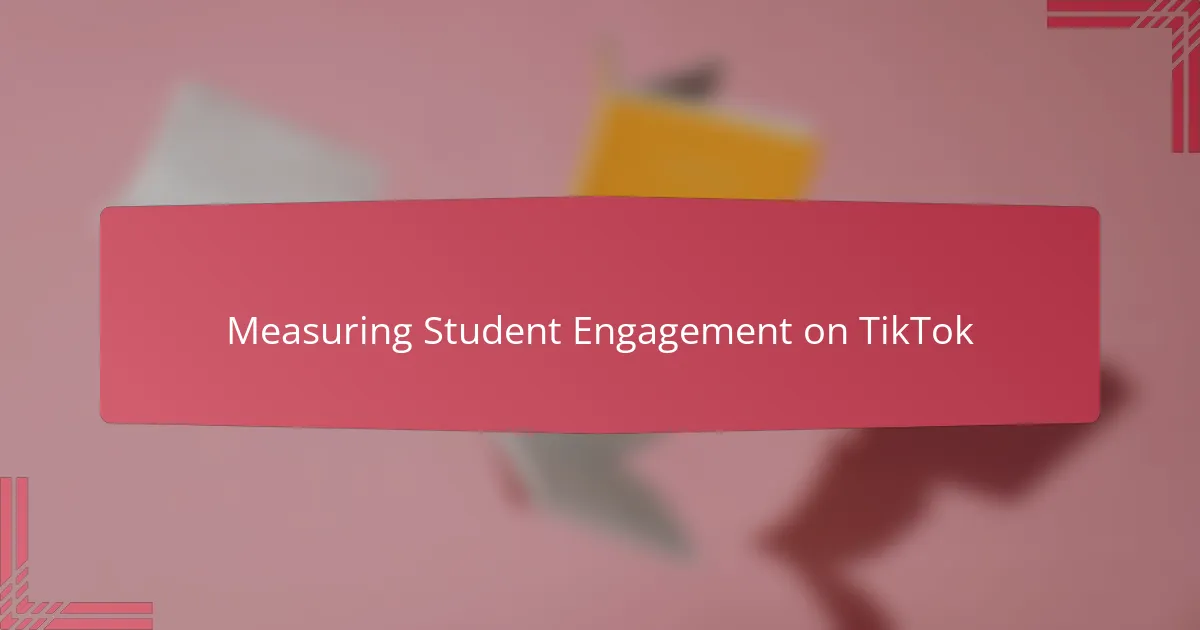
Measuring Student Engagement on TikTok
Measuring student engagement on TikTok isn’t always straightforward, but I’ve learned to look beyond just views and likes. Sure, those numbers can hint at how many people saw a video, but the true measure for me is in the comments and shares—those moments when students spark conversations or inspire peers to take action. Have you noticed how a thoughtful reply or a creative remix often signals deeper involvement than a mere tap of the screen?
Another insight from my experience is observing the quality of student reflections about their own TikTok projects. When students articulate what they learned or why they chose a particular approach, it reveals engagement that metrics alone can’t capture. It makes me wonder—aren’t genuine learning and critical thinking the real signs of success, even if a video isn’t an overnight viral hit?
Finally, engagement manifests in the classroom atmosphere too. After launching TikTok assignments, I frequently notice a buzz of enthusiasm, spontaneous peer feedback, and eagerness to improve videos. This energy, while intangible, confirms to me that students are connecting with content in meaningful ways. Isn’t that what we ultimately hope for when integrating new tools—active minds instead of passive scrolling?
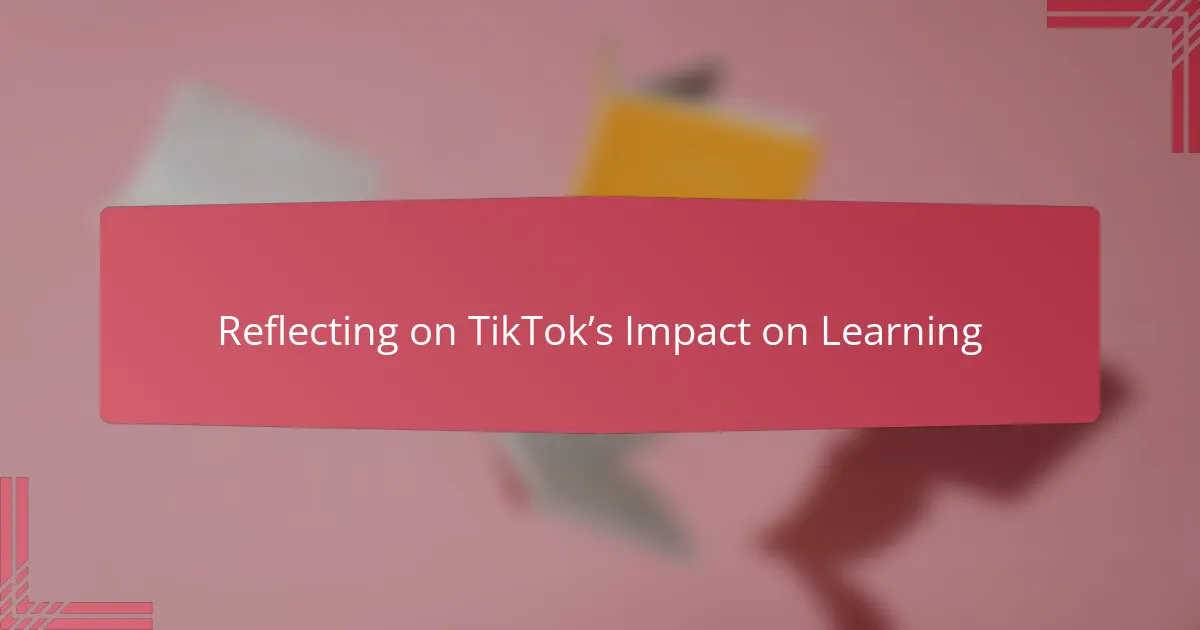
Reflecting on TikTok’s Impact on Learning
Reflecting on TikTok’s impact on learning, I’ve noticed how it reshapes students’ relationship with knowledge. It’s striking how a platform built for quick entertainment can encourage learners to distill their thoughts sharply and creatively. Have you ever been surprised by the depth that can emerge from just 60 seconds of carefully crafted storytelling?
At the same time, TikTok challenges the traditional pace of learning. It pushes students to think fast and be succinct, which isn’t always comfortable but often reveals new strengths. I’ve seen students who usually hesitate step into the spotlight, sharing their ideas with a confidence that feels fresh and authentic. Isn’t it interesting how such a fast format can deepen reflection rather than shallow it?
Yet, this impact isn’t without complexity. While students engage energetically, I’ve wondered how lasting this learning is beyond the screen. Does the immediate buzz translate into enduring understanding, or do we risk valuing quick hits over critical depth? From my experience, when combined with thoughtful guidance, TikTok can be a powerful springboard rather than a distraction.